Thingiverse
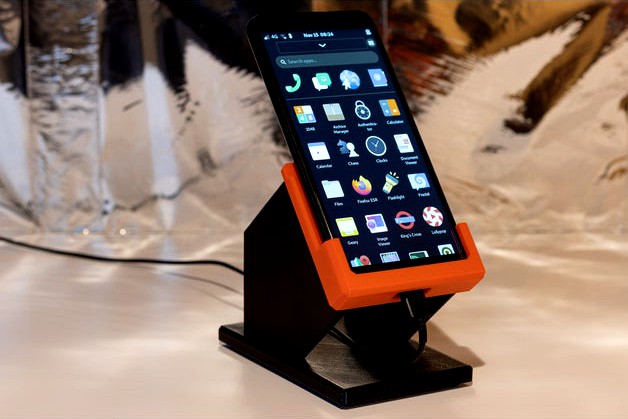
PinePhone Development Stand by sinns
by Thingiverse
Last crawled date: 3 years, 3 months ago
PinePhone Development Stand
The PinePhone development stand is specifically designed for the PinePhone with software development and testing in mind. The phone is held securely at a comfortable angle (for viewing and use of the touch screen) and will not tip over if the phone is used at the bottom or top of the screen. In addition, the bracket has side supports to prevent the phone falling sideways when the power or volume buttons are used. The lower edge of the phone is raised around 6cm by the stand to ensure that all types of USB-C cables and connectors can fit easily without stressing the socket or cable. The base of the stand has indented guides for stick-on rubber feet (such as 3M Bumpon feet) which can be used to prevent the stand from sliding on the desk when pressing on the touch screen.
Note: This project is GPLv3 open-source. The github repository for the model (containing the complete OpenSCAD project) can be found at https://github.com/simoninns/PinePhone-Dev-Stand
Overview
The case is designed in two parts (the stand and the bracket) which slot together. This also allows a simple two colour print if desired (or both parts can be printed at the same time).
The project also includes a simple model of the PinePhone to assist with modelling and adjustments.
Assembly instructions
Print both parts of the stand. Run a small amount of super-glue into both recesses on the back of the phone bracket. The press this into the stand (ensuring that the bracket and stand are the right way up). Use a little pressure to hold in place for 30 seconds or until the glue is correctly set.
Guides are provided on the unside of the base for 13-14mm rubber feet (use 3M bumpon or similar). Either 4 or 6 feet can be used depending on the desired level of stability.
Printing instructions
Overview
The model has been printed and tested on the Prusa MK3S/MMU2S printer using PETG filament. All parts fit on a 20x20 printing bed.
The OpenSCAD source files provide a parameter interface that allows you to render either the whole model or the individual parts (ready for STL (or other 3D format) export). This requires OpenSCAD 2019.05 or later.
The base can be printed as-is on the print bed as the side parts do not need any support. Print the bracket with the USB-C hole on the print bed. No support is necessary for the bracket either. All edges are angled (rather than rounded) to ensure simple slicing and printing of the shapes.
Recommended print settings
Stand
Number required: 1
Material: Prusament PETG (Prusa Jet Black)
Layer: 0.20mm (Quality)
Infill: 15%
Supports: None
Print time (approximate): 6h 41m
Phone bracket
Number required: 1
Material: Prusament PETG (Prusa Orange)
Layer: 0.20mm (Quality)
Infill: 15%
Supports: None
Print time (approximate): 3h 26m
Author
The PinePhone development stand is designed and maintained by Simon Inns.
Licensing
OpenSCAD source files - software license (GPLv3)
This is free software: you can redistribute it and/or modify
it under the terms of the GNU General Public License as published by
the Free Software Foundation, either version 3 of the License, or
(at your option) any later version.
This program is distributed in the hope that it will be useful,
but WITHOUT ANY WARRANTY; without even the implied warranty of
MERCHANTABILITY or FITNESS FOR A PARTICULAR PURPOSE. See the
GNU General Public License for more details.
You should have received a copy of the GNU General Public License
along with this program. If not, see
3D model files - Creative Commons license (Creative Commons BY-SA 4.0)
Please see the following link for details: https://creativecommons.org/licenses/by-sa/4.0/
You are free to:
Share - copy and redistribute the material in any medium or format
Adapt - remix, transform, and build upon the material
for any purpose, even commercially.
This license is acceptable for Free Cultural Works.
The licensor cannot revoke these freedoms as long as you follow the license terms.
Under the following terms:
Attribution - You must give appropriate credit, provide a link to the license, and indicate if changes were made. You may do so in any reasonable manner, but not in any way that suggests the licensor endorses you or your use.
ShareAlike - If you remix, transform, or build upon the material, you must distribute your contributions under the same license as the original.
No additional restrictions - You may not apply legal terms or technological measures that legally restrict others from doing anything the license permits.
The PinePhone development stand is specifically designed for the PinePhone with software development and testing in mind. The phone is held securely at a comfortable angle (for viewing and use of the touch screen) and will not tip over if the phone is used at the bottom or top of the screen. In addition, the bracket has side supports to prevent the phone falling sideways when the power or volume buttons are used. The lower edge of the phone is raised around 6cm by the stand to ensure that all types of USB-C cables and connectors can fit easily without stressing the socket or cable. The base of the stand has indented guides for stick-on rubber feet (such as 3M Bumpon feet) which can be used to prevent the stand from sliding on the desk when pressing on the touch screen.
Note: This project is GPLv3 open-source. The github repository for the model (containing the complete OpenSCAD project) can be found at https://github.com/simoninns/PinePhone-Dev-Stand
Overview
The case is designed in two parts (the stand and the bracket) which slot together. This also allows a simple two colour print if desired (or both parts can be printed at the same time).
The project also includes a simple model of the PinePhone to assist with modelling and adjustments.
Assembly instructions
Print both parts of the stand. Run a small amount of super-glue into both recesses on the back of the phone bracket. The press this into the stand (ensuring that the bracket and stand are the right way up). Use a little pressure to hold in place for 30 seconds or until the glue is correctly set.
Guides are provided on the unside of the base for 13-14mm rubber feet (use 3M bumpon or similar). Either 4 or 6 feet can be used depending on the desired level of stability.
Printing instructions
Overview
The model has been printed and tested on the Prusa MK3S/MMU2S printer using PETG filament. All parts fit on a 20x20 printing bed.
The OpenSCAD source files provide a parameter interface that allows you to render either the whole model or the individual parts (ready for STL (or other 3D format) export). This requires OpenSCAD 2019.05 or later.
The base can be printed as-is on the print bed as the side parts do not need any support. Print the bracket with the USB-C hole on the print bed. No support is necessary for the bracket either. All edges are angled (rather than rounded) to ensure simple slicing and printing of the shapes.
Recommended print settings
Stand
Number required: 1
Material: Prusament PETG (Prusa Jet Black)
Layer: 0.20mm (Quality)
Infill: 15%
Supports: None
Print time (approximate): 6h 41m
Phone bracket
Number required: 1
Material: Prusament PETG (Prusa Orange)
Layer: 0.20mm (Quality)
Infill: 15%
Supports: None
Print time (approximate): 3h 26m
Author
The PinePhone development stand is designed and maintained by Simon Inns.
Licensing
OpenSCAD source files - software license (GPLv3)
This is free software: you can redistribute it and/or modify
it under the terms of the GNU General Public License as published by
the Free Software Foundation, either version 3 of the License, or
(at your option) any later version.
This program is distributed in the hope that it will be useful,
but WITHOUT ANY WARRANTY; without even the implied warranty of
MERCHANTABILITY or FITNESS FOR A PARTICULAR PURPOSE. See the
GNU General Public License for more details.
You should have received a copy of the GNU General Public License
along with this program. If not, see
3D model files - Creative Commons license (Creative Commons BY-SA 4.0)
Please see the following link for details: https://creativecommons.org/licenses/by-sa/4.0/
You are free to:
Share - copy and redistribute the material in any medium or format
Adapt - remix, transform, and build upon the material
for any purpose, even commercially.
This license is acceptable for Free Cultural Works.
The licensor cannot revoke these freedoms as long as you follow the license terms.
Under the following terms:
Attribution - You must give appropriate credit, provide a link to the license, and indicate if changes were made. You may do so in any reasonable manner, but not in any way that suggests the licensor endorses you or your use.
ShareAlike - If you remix, transform, or build upon the material, you must distribute your contributions under the same license as the original.
No additional restrictions - You may not apply legal terms or technological measures that legally restrict others from doing anything the license permits.
Similar models
thingiverse
free

Hyperpixel 4.0 touch and Raspberry Pi 4B case (with Prusa MK3S bracket) by sinns
...s - you may not apply legal terms or technological measures that legally restrict others from doing anything the license permits.
thingiverse
free

Extreme AP305C Bracket by sinns
...s - you may not apply legal terms or technological measures that legally restrict others from doing anything the license permits.
thingiverse
free

wirewrap_huge by mirage335
...hould have received a copy of the gnu general public license
along with wirewrap_huge. if not, see http://www.gnu.org/licenses/.
thingiverse
free

Xiaomi M365 Pro Luggage Rack by sinns
...s - you may not apply legal terms or technological measures that legally restrict others from doing anything the license permits.
thingiverse
free

Mobile Phone Stand by derozgur
...derozgur
thingiverse
a mobile phone stand for mobile software developer. you can use it with your mobile phone as cable plugged.
thingiverse
free

Phone Holder by GrizzleMotte
... my self. using it for tablet and phone stand. you can print it either way you want. i was able to print it with out a problem :)
thingiverse
free

Phone Holder by GrizzleMotte
... my self. using it for tablet and phone stand. you can print it either way you want. i was able to print it with out a problem :)
thingiverse
free

Lazy Man's Pinephone Development Stand by arcanemachine
...nt. it has been designed to fit a pinephone without a case, which should fit comfortably in the stand, with a little wiggle room.
grabcad
free

E3D-v6 Heater Block for Sensor Cartridges
...e gnu general public license as published by the free software foundation, either version 3 of the license, or any later version.
grabcad
free

BLDC test-kit
...nt the motor stand with abs if possible.
others can be made of either pla or petg.
please edit as needed.
no license is required.
Pinephone
thingiverse
free

PinePhone Battery holder by Willlovesbearz
...pinephone battery holder by willlovesbearz
thingiverse
a small case that holds 2 spare batteries for the pine64 pinephone
thingiverse
free

Basic PinePhone Stand by TheClockworkCoder
...ne stand by theclockworkcoder
thingiverse
just a simple pinephone stand, nothing fancy.
no special printer setting are required.
thingiverse
free

Pinephone LED cover by funeralglhf
...hf
thingiverse
a cover of the led for the pinephone in case you lost yours. check if you're printing it at the correct size.
thingiverse
free
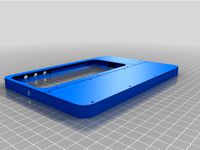
Pinephone CyberDeck Case by 5ilver
...hone. the bottom area should be suitable to mount a keyboard in, and there is room on the side for a usb connection to the phone.
thingiverse
free

pinephone back case really really thickened by williamsengineering
... really thickened by williamsengineering
thingiverse
this is the same pinephone back case as the other one but thickened by 3mm.
thingiverse
free

Open-design PinePhone Case
...hich means that there may be tweaks needed in the future.
it is an open design, and you can access the cad files here on onshape!
thingiverse
free

PinePhone case/bumper by yeyeto2788
...umper by yeyeto2788
thingiverse
design taken from redsecond.
a simple remix opening the back side in order not to waste plastic.
thingiverse
free

PinePhone to RCA 7" tablet keyboard adapter plate by 5ilver
...uld tuck neatly into this adapter, and the usbc end can be carefully glued in place so the pinephone can slide in and out easily.
thingiverse
free

Weighted Pinephone Stand by 5ilver
...s a gopro usb cable i got at goodwill
usb holder red fits the included red usb cable from pine64
gif: https://imgur.com/a/i7gjgy5
thingiverse
free

PinePhone Hard Case by _The3DmaN_
...this case will provide protection for your pinephone, i take no responsibility for any damage caused by or while using this case.
Sinns
3d_export
$20

Wheel SINN rim and tire 3D Model
...eels sport performance disk brake caliper brembo yokohama sinn racing
wheel sinn rim and tire 3d model 3dlogicline 40631 3dexport
3dbaza
$4

Petit And Sinn Lamp Collection (325025)
...;verts:34 355 <br>xform: yes<br>render: v-ray 5<br>platform v-ray , corona<br>formats: 3ds max 2013, obj
3dbaza
$3

PETIT AND SINN COLLECTION (330433)
...<br>verts: 47 412<br>xform: yes<br>render: v-ray 5<br>platform: v-ray<br>formats: 3ds max 2016, obj
thingiverse
free

Extreme AP305C Bracket by sinns
...s - you may not apply legal terms or technological measures that legally restrict others from doing anything the license permits.
thingiverse
free

Feder by SaschaB
...ziellen sinn. nur um zu sehen ob es geht ;)
gedruckt mit pla.
um die feder halb zusammen zu drücken werden 4,5 kg druck benötigt.
thingiverse
free

Cheap and Easy Stackable Box / Leicht zu Druckende stapelbare Box by Lucifor
...it günstigem filament ca 60 cent je box. viel spaß damit, sie gewinnt keinen schönheitspreis, aber das war auch nicht der sinn :)
thingiverse
free

Pulledpork Kralle by Dymilla
...auf anfrage habe ich hier für interessenten eine stl erstellt
private skizze,modell,
geistige „eigentum“ im sinne des art. 14 gg
thingiverse
free

Xiaomi M365 Pro Luggage Rack by sinns
...s - you may not apply legal terms or technological measures that legally restrict others from doing anything the license permits.
thingiverse
free

Peace Bowl / Tray by FamousK
...g with an 0.8mm or 0.4mm nozzle
printed on an anet a8 with an 0.8mm nozzle at 0.4mm layer, 3 bottomlayers, 0 toplayers, 2 shells.
Development
turbosquid
$14

housing development
... available on turbo squid, the world's leading provider of digital 3d models for visualization, films, television, and games.
turbosquid
$100

Proposed Residential Development
...3d model proposed residential development for download as rvt on turbosquid: 3d models for games, architecture, videos. (1309182)
turbosquid
$15

gaming developing character
...model gaming developing character for download as obj and fbx on turbosquid: 3d models for games, architecture, videos. (1171181)
turbosquid
$8

OUTDOOR LEG DEVELOPMENT
... available on turbo squid, the world's leading provider of digital 3d models for visualization, films, television, and games.
3d_export
$11

dodge viper developments
...dodge viper developments
3dexport
unfinished dodge viper multi-polygonal
turbosquid
$6

Furniture Set for Game Development
...niture set for game development for download as blend and fbx on turbosquid: 3d models for games, architecture, videos. (1676689)
3d_export
free
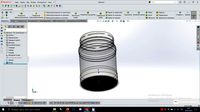
bank developed in solidworks 2020
...bank developed in solidworks 2020
3dexport
3d_export
$5
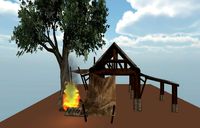
Cottage For Game Developers 3D Model
...game developers 3d model
3dexport
untiy3d cry engine unreal engine fbx
cottage for game developers 3d model websss 56680 3dexport
turbosquid
$44
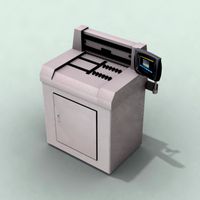
X-RAY FIlm Developer 3DS
... available on turbo squid, the world's leading provider of digital 3d models for visualization, films, television, and games.
turbosquid
$300

Uterus different stages of development cut label
...fferent stages of development cut label for download as blend on turbosquid: 3d models for games, architecture, videos. (1481240)
Stand
turbosquid
$50

stand watermelon stand
...yalty free 3d model stand watermelon stand for download as ma on turbosquid: 3d models for games, architecture, videos. (1528284)
archibase_planet
free
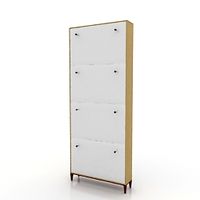
Stand
...stand
archibase planet
stand post pole
stand - 3d model for interior 3d visualization.
archibase_planet
free

Stand
...stand
archibase planet
stand sport barbell
stand kettler - 3d model for interior 3d visualization.
archibase_planet
free

Stand
...stand
archibase planet
locker drawer stand
stand 897810 - 3d model for interior 3d visualization.
archibase_planet
free
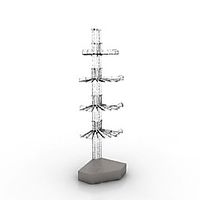
Stand
...stand
archibase planet
stand rack post
stand 2 - 3d model for interior 3d visualization.
archibase_planet
free

Stand
...stand
archibase planet
stand storefront shelving
stand 3 - 3d model for interior 3d visualization.
archibase_planet
free
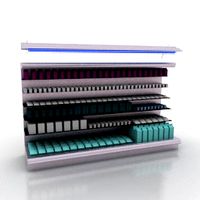
Stand
...stand
archibase planet
stand shelf shelving
stand 4 - 3d model for interior 3d visualization.
archibase_planet
free
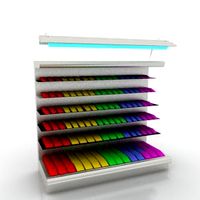
Stand
...stand
archibase planet
stand post stall
stand 5 - 3d model for interior 3d visualization.
archibase_planet
free
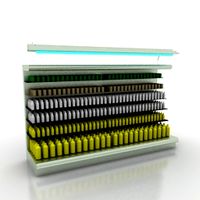
Stand
...stand
archibase planet
stand post stall
stand 6 - 3d model for interior 3d visualization.
archibase_planet
free
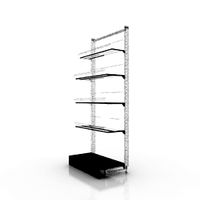
Stand
...stand
archibase planet
stand post shelving
stand 7 - 3d model for interior 3d visualization.
